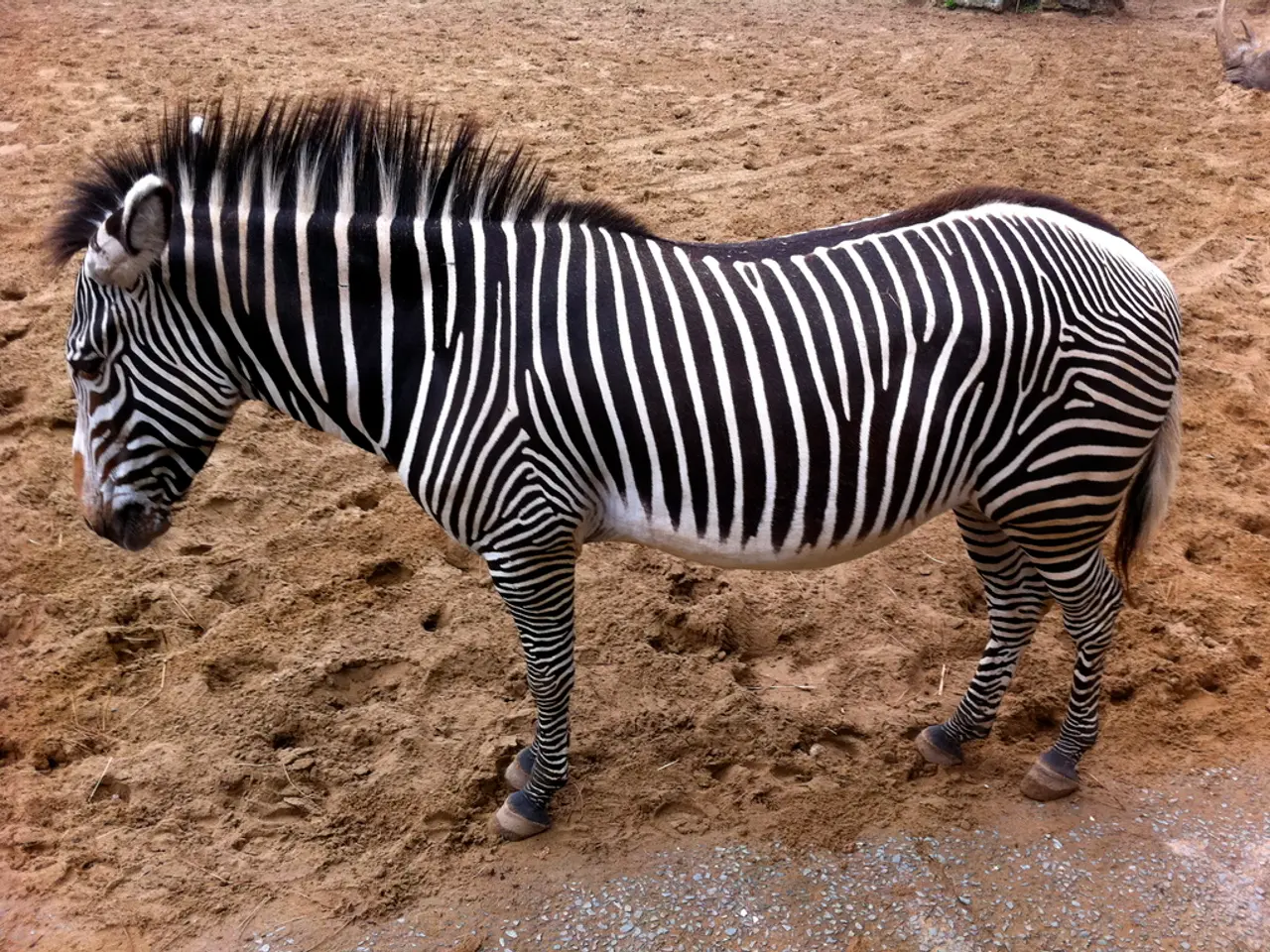Marvels of the Natural World: Zebras, Nature's Fascinating Painted Horses
In the vast savannas and mountainous regions of Africa, a unique and captivating creature roams freely - the zebra. These iconic animals, known for their striking black-and-white stripes, play a crucial role in maintaining the balance of their ecosystems.
Zebras are not just beautiful to look at; they are essential workers in their habitats. By preventing overgrowth, creating pathways, dispersing seeds, and facilitating migration routes, they help ensure the health and diversity of their surroundings.
There are three main species of zebras: the Plains Zebra (Equus quagga), Mountain Zebra (Equus zebra), and Grevy's Zebra (Equus grevyi). Each species has adapted to its unique habitat, making them well-suited to their respective environments.
The Plains Zebra, the most widespread and numerous of the zebra species, can be found in grasslands and savanna woodlands. They are the most commonly seen zebras in many African national parks and reserves. The Mountain Zebra, on the other hand, is native to the mountainous regions of South Africa and Namibia and is easily recognizable by its distinctive dewlap. Grevy's Zebra, the largest of the three species, inhabits the arid regions of Ethiopia and northern Kenya.
Zebras are herbivores that primarily feed on grasses but may also eat leaves, bark, and shrubs when food is scarce. Their diet is crucial for maintaining the health of the grasslands they inhabit.
Zebras are highly social animals that rely on group dynamics for survival. They form massive herds that move in response to seasonal rainfall, often migrating long distances in search of fresh grazing lands. This social behaviour not only provides protection from predators but also helps them locate food and water sources.
However, zebras face numerous threats in the wild, with lions, hyenas, wild dogs, and crocodiles being their primary predators. Additionally, they face threats from habitat loss, poaching and illegal hunting, and climate change. These factors put their populations at risk and have led to declines in some species.
The purpose of zebra stripes has been a subject of debate among scientists. Several theories suggest that they help with camouflage, predator confusion, temperature regulation, pest deterrence, and social recognition. Despite the ongoing debate, one thing is clear: the stripes make zebras stand out as one of the most iconic and beloved creatures in Africa.
Zebras belong to the genus Equus, which also includes horses and donkeys. This shared ancestry is evident in their similarities, such as their speed, agility, and powerful kicks for defense.
In conclusion, zebras are remarkable animals that play a vital role in their ecosystems. Their unique stripes, social behaviour, and adaptability make them a fascinating subject of study and a beloved symbol of Africa's wild beauty. It is crucial that we continue to protect these incredible creatures and their habitats to ensure their survival for future generations to enjoy.
Read also:
- Genetically Modified Spiders Debut Worldwide First
- Covid-19 surge in September: "There's a risk of an extended infection wave simultaneously with the flu season"
- Lawsuits filed by numerous families against Boeing and Honeywell in relation to the fatal Air India crash in June, claiming the lives of 260 individuals.
- A visiting experience for Starmer might face an early end




